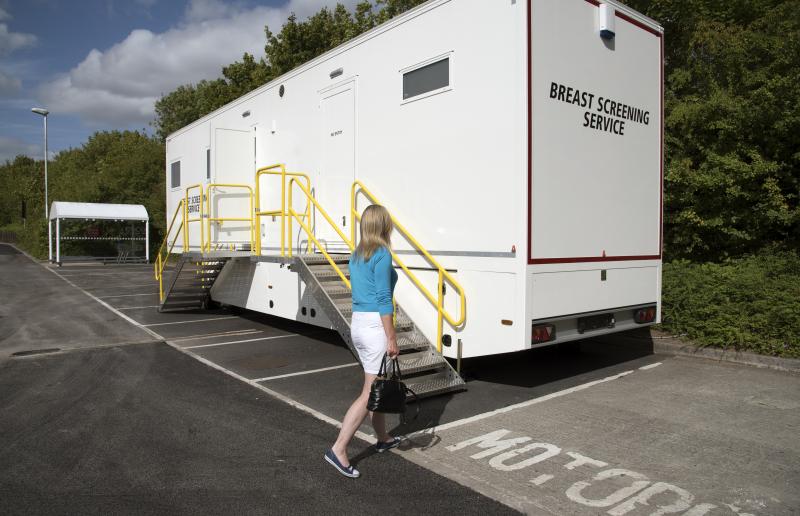How mobile medical units are changing the health industry

Until the past decade, the impact of mobile medical units on healthcare has barely been evaluated in full. However, the pandemic putting great strain on hospitals and clinics has forced practitioners to look for ways to alleviate it. Slowly but surely, they’re seeing the potential of these hospitals on wheels as a game-changer in the health industry.
According to David Cutler, an economics professor at Harvard’s Kennedy School of Government, the health industry has historically remained stable in recessions. People continue to seek medical care regardless of the state of the economy. COVID-19 changed this, with strict quarantine limiting outside activity, which means people who frequent hospitals and clinics for regular treatment find themselves unable to go out as often.
The pandemic also limited people’s ability to report for work, stifling families’ source of income. Unemployment insurance becomes their source, with claims reaching an all-time high of nearly 3 million, according to the Department of Labor. By comparison, the number of claims filed during the global financial crisis of 2009 amounted to just below 1 million. It was a scenario in nearly every industry. It was unprepared to deal with, healthcare included.
Mitigating the impact of not just COVID-19 but future health crises demands the use of every resource at the industry’s disposal. Previously a largely untapped resource, mobile medical units might see an increase in demand and utilization to augment the country’s struggling healthcare system. Here are several ways they will change healthcare forever.
Extending a Hospital’s Reach
The disparity in healthcare has been a major concern even years before the pandemic. Despite the attempts at reform like the Affordable Care Act, cultural and financial issues are discouraging people living in rural areas to seek medical care. This finding was based on a study that conducted a complete search and inclusion of 34 relevant articles.

A healthcare institution employing mobile medical units can effectively extend its reach to remote areas. While not as fully equipped as a traditional hospital or clinic, the vehicles can be configured to fulfill a specific medical need, from general health to mammography. With enough supplies, the vehicles can operate in areas with limited resources, a common environment in the rural areas.
A mobile medical unit provides a solution to some of the issues discouraging people from seeking medical care. It saves patients a trip to the hospital for non-urgent conditions, though it also urges them to do so for conditions that warrant it. For local medical practitioners, a unit carrying state-of-the-art medical equipment allows them to render treatment more effectively.
Educating the Public
Raising awareness regularly accompanies medical outreach programs where mobile medical units are employed. In an age where truths can be spread as easily as half-truths, medical practitioners make every effort to educate the public on the importance of keeping overall health.
It hasn’t been easy, however. The status quo regarding nutrition, for example, penalizes the promotion of nutrient-rich selections and rewards high-risk processed foods thanks to aggressive advertising. More important is the need to motivate the local populace into making healthier decisions, which is only accomplishable by establishing trust between visiting practitioners and the local populace.
The sight of a mobile medical unit entering a community helps establish the needed trust. It gives the impression to the local populace that they will still be cared for no matter how far from the big city they live in. Giving people a reason to have faith in the doctor will increase the merit of any expert advice he or she gives.
Cost Reduction for Hospitals and Clinics
Cost is reportedly one of the factors preventing mobile medical units from widespread use. Given the state-of-the-art equipment fitted in the space of a trailer or RV, a mobile medical unit can cost between $350,000 and $700,000 annually to operate. This hefty price tag is enough to dissuade healthcare institutions from long-term investment in several units, let alone one.
However, further research has shown the substantial return on investment these units can generate. A study of one particular unit serving the Greater Boston area found that patient visits to the unit generated a cost reduction ratio of 30 to 1. Simply put, every dollar invested on a mobile medical unit saved $30 that would’ve been spent in administering care in a traditional hospital or clinic. In the national estimate, the ratio was 14 to 1.
Conclusion
Following the resolution of the current crisis, the healthcare sector will take these lessons to heart, mobilizing every resource to lessen the impact of the next. By this time, mobile medical units will be in an advantageous position, plugging any gaps in the country’s healthcare system. These vehicles should be duly considered not as a one-size-fits-all solution but as part of a greater solution.
More to Read:
Previous Posts:








